In 1806 a group of conspirators decided to kidnap Napoleon and substitute a double in his place. The false emperor was to be a Pole, Father Stefan Błażewski.
"The phenomenon of a double, or a physical twin, although not related in any way, has always been a threat," write Teresa Kowalik and Przemysław Słowiński, authors of the book Sobowtóry. From Nero to Putin . A horror and a fascination that was quickly used to protect the crowned heads. The history of the world is full of "substitutes". In the pages of history you can find numerous stories about people who, using the attribute of their appearance, gained fame and royal splendor. As we read in Sobowtory :
Already in the Bible we find the story of Jacob who deceived his father Isaac by pretending to be his twin brother, Esau, and thus obtained from him the blessing intended for the firstborn. In ancient times, it was not uncommon to impersonate a deceased ruler or member of a ruling family in order to gain power in the state. Some usurpers even managed to claim the throne.
More often, however, the grace or the burden of being similar to another person was used for fear for the safety of the rulers. No wonder then that almost every monarch in history could "boast" of having a double, well, some had even several of them. It was them who replaced the coronates, often saving their lives from conspirators and leading their opponents into the field. This was the case with Napoleon…
Little Corporal - Big Problem
He had a few officially assigned doubles, among which the leaders were Achilles de Touches, Jean-Baptiste Franceschi Cipriani and François Robeaud. However, in 1806, neither of them was useful to the emperor. Hardly anyone expected that Napoleon, who was at the height of his fame, might be threatened. After all, the Prussia of Frederick William III, devastated in October at Jena and Auerstädt, ceased to count on the international arena, and Austria had been silently licking its wounds from Austerlitz for a year.
Almost all of Europe was under the hard boot of the Corsican devil. Only from the East it blew terror from the tsarist throne. And from across the English Channel Napoleon could not expect anything good. And as it soon turned out, he was right.
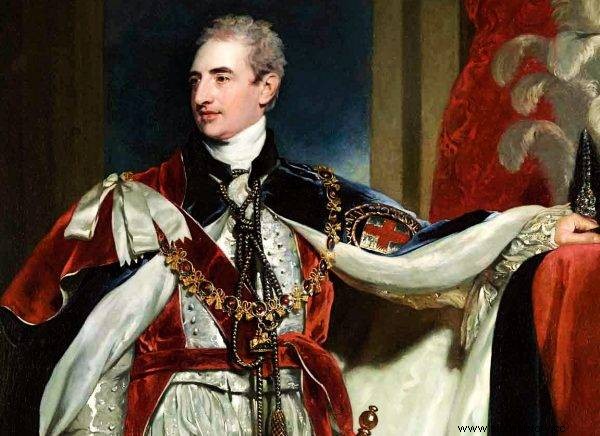
The group of conspirators was chaired by Lord Robert Stewart Castlereagh
For before the gunpowder fumes descended for good at Jena, a conspiracy against Napoleon was set up in London. Its scale, however, was far from the great international coalitions with which Bonaparte had fought so far. This time in a quiet apartment of a local courtesan, the elite of British politicians from the opposition Tory party decided to kidnap the emperor and put a double in its place. The latter was then supposed to lead to chaos in the Grand Army and, as a result, to the fall of the empire. The real Napoleon was to be a bargaining chip during the expected negotiations with France.
As Teresa Kowalik and Przemysław Słowiński, the conspirators presided over by Lord Robert Stewart Castlereagh note in their book, "the thought that everything that is most important on the continent is decided by» this French twister «, and thus England falls to the role of just a fan of activities of global importance. " On the other hand, kidnapping and blackmail, unprecedented in history, was supposed to solve a big problem with the little corporal once and for all.
Kidnap, as it's easy to say
A truly devilish plan, but even more difficult to implement, especially since the emperor of the French was nowhere to sit still. In Dopowtórach we read:
Especially since the accession to the throne of France, these were mostly quite specific journeys, namely military campaigns. His bodyguards usually consisted of tens of thousands of soldiers. The closest protection was the bodyguard, composed of the guard unit designated for a given day and a dozen or so select killers , skilled in the use of various types of weapons, who accompanied Napoleon 24 hours a day.
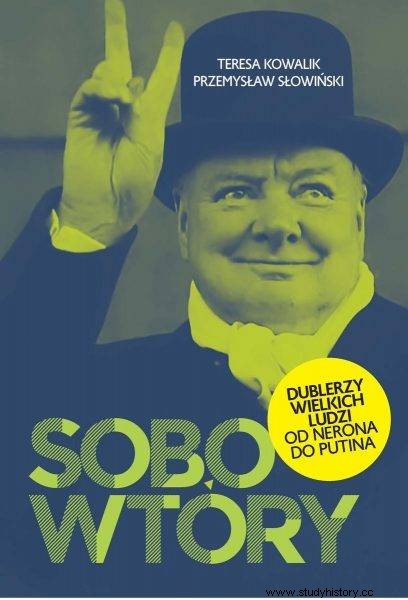
The text was created, among others based on the book by Teresa Kowalik and Przemysław Słowiński "Sobowtóry", which has just been published by the Fronda publishing house.
As if that were not enough, the meddlesome and well-trained agents of the imperial police led by the omnipotent Joseph Fouché had to be maneuvered out. In this situation, the London conspirators gladly accepted a helping hand from the anti-Napoleonic Philadelphia conspiracy operating in the ranks of the French army. They informed Lord Castlereagh and his companions of the imperial custom of morning horse rides with only a handful of bodyguards. However, anyone who thought that the kidnapping was to be of a violent nature would be wrong. The English gentlemen were going to be more subtle.
A real circus on wheels
In order for the dream of Europe without Napoleon to come true, the conspirators created a 14-person unit of specialists for impossible tasks. Before they were sworn in, they had to pass a secret test. In general, little is known about him, except that three candidates for the then commandos lost their lives during it . So it wasn't easy.
Ultimately, as the authors of Sobowtórów write :"The kidnappers disguised as artists, equipped with false passports, set off to the French-occupied Prussia, on which they traveled in the carts of a theater and circus group." During their journey they ended up in Szamotuły near Poznań in December 1806. Their plan was to lure the emperor there under the pretext of revealing the secret of the operation of the "Turk" - a machine that plays chess on its own.
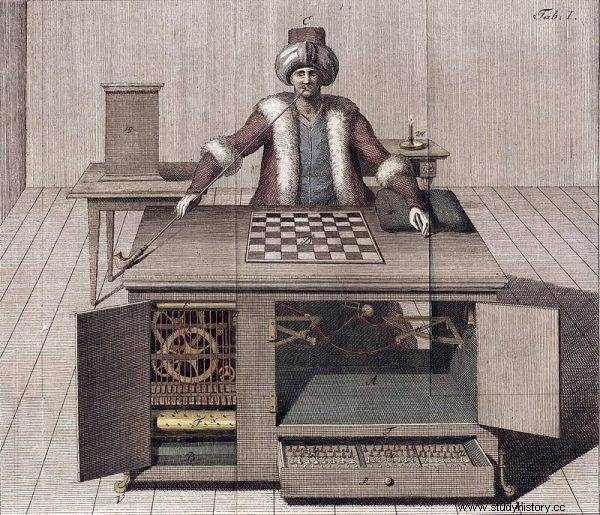
The plan was to lure the emperor under the pretext of revealing the secret of the operation of the "Mechanical Turk"
The world of that time was fascinated by the invention of Wolfgang von Kempelen, a genius engineer and physicist from Vienna. But it was actually a clever hoax and the whole large structure topped with a wooden puppet dressed in Turkish fashion concealed a real chess player. Most often it was some grandmaster who, using a clever mechanism, moved the pieces on the chessboard.
It was hoped that Napoleon, as a great enthusiast of chess, would want to enter the machine without hesitation, and then he would be locked in it and then replaced with a double prepared by the English. A Polish priest from Gostyń, Stefan Błażewski, was prepared for this memorable role.
Agent in cassock
The Polish clergyman seemed to be the perfect candidate for the imperial replacement. In addition to his striking resemblance to the god of war, according to the conspirators, he was supposed to have one more advantage - reluctance towards the emperor . As Teresa Kowalik and Przemysław Słowiński write in their book about doppelgangers:"The behavior of Napoleonic troops, and especially the Bavarian troops stationed in Gostyń, commanded by the brother of the Emperor Prince Hieronim Bonaparte, did not encourage sympathy with the Bonapartists."
Moreover, his frequent visits to Napoleon's court as a delegate of the Polish clergy allowed Błażewski to closely observe the imperial behavior and gestures. And that was what the London conspirators were counting on. To their surprise, however, the Polish double did not rush to carry out such an honorable task. In this situation, the leader of the English detachment of the kidnappers, Benjamin Bathurst "ordered to kidnap his beloved niece and threatened to kill her if the Gostynian monk would not obey him" - we read in Sobowtory .
Checkmate
Initially, the operation, code-named "The Chess Player", seemed to be going as intended by the gentlemen from London. On December 13, 1806, Szamotuły was visited by the emperor, attracted not only by the mechanical "Turk", but also by the legend of the black iron mask suggested by the Philadelphians. Duchess Halszka Ostrogska, imprisoned in the tower of the Szamotuły castle, was supposed to wear it in the past, by order of her husband. Bonaparte could not miss this opportunity.
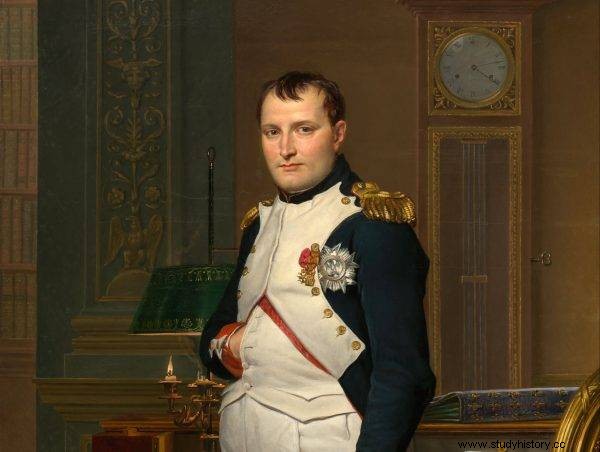
On December 13, 1806, the emperor visited Szamotuły with a small team.
Further it went downhill. When the usually sober and unsuspecting emperor began to study with interest the internal structure of the Turk, the door of the machine suddenly slammed behind him. " The Corsican was kidnapped, then transferred from the tower through an underpass to a nearby church , and from there at a racing pace to Kołobrzeg, where an agreed ship was waiting "- we read in Sobowtory Teresa Kowalik and Przemysław Słowiński.
A moment later, when the machine's door opened, the eyes of the people gathered in the castle in Szamotuły saw the emperor who was very happy and immediately set off with his entourage to Poznań. The conspirators, convinced that the Błażewski double had come out of the machine, were already rubbing their hands to take power in Whitehall. France has been checked. Meanwhile…
The Man Who Knew Too Much
When the gallop with the emperor wrapped in a rug ended at the seashore, a terrible truth was revealed. The kidnapped was not Napoleon at all, but priest Błażewski! In the end, the kidnappers found differences in appearance, and the interested person did not object at all. It turned out that the entire game was controlled by the French counterintelligence from the very beginning. And his boss, Karl Ludwig Schulmeister, only confirmed that he was not called "the emperor of spies" for nothing.
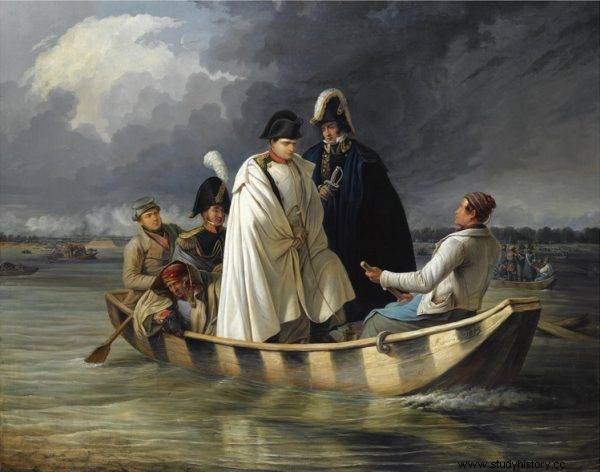
The kidnapped was not Napoleon at all, but priest Błażewski!
He was to establish cooperation with Błażewski during his numerous stays in Paris. Schulmeister turned the Polish priest into a double agent, who changed roles with Napoleon in Poznań. As a result, Szamotuły together with the conspirators found not a priest, but a real emperor (!). And since the mechanical "Turk" played its role perfectly, there was a substitution - only not the one that the English had hoped for. The true ruler of Europe left for Poznań, while Błażewski was given to Kołobrzeg.
Oddly enough, the unmasked imperial double did not fall victim to the conspirators' retaliation. However, as we read in Sobowtory :“Although Bathurst spared his life, French intelligence warned the priest that he might be hit by Castlereagh's revenge. He suggested to him to hide somewhere for a while and not stick his nose out of the hollow ”. Błażewski eagerly took advantage of the advice and it was not until 1811 that he returned to his convent in Gostyń. However, until the end of his life, he always looked back anxiously ...
Bibliography
- Kowalik T., Słowiński P., Sobowtóry. From Nero to Putin , Warsaw 2021.
- Łysiak W., Szachista , Krakow 1982.
- Skorupski G., Meetings with the past. Gostyń and its surroundings , Gostyń 2009.
